
Once regal cities filled with palaces, grand temples, and huge baths, now it lays in ruins, trying to make its voice heard over the canopy formed by the dense trees. Such ancient civilizations, though might have been reduced to nothing but a pile of rocks, yet they provide a plethora of insights into a life that once was. They are the living testimony of an era gone by and have tall tales of a life lived centuries ago. Such sites need to be preserved at all cost.
One such wondrous ancient archaeological site is nestled beyond the trees and over the cities of Puducherry. Located about 7 km through a dense forest area, Arikamedu is a marvel to look at.
I was overcome with a zeal of enthusiasm when I decided to visit this hidden wonder. I had been trying to dig deeper into the past of this town when I came across Arikamedu and decided to hop onto the opportunity.
It is not an easy task to head over to this secluded area since there is hardly any rickshaw willing enough to take you. There reluctant is justified too, since reaching the place is eerier than the town itself.
As the rickshaw slowly starts to make its way, the small bungalows of Puducherry start to fade away and make way for the large trees that now make my landscape more exciting. While the distance is not too much, the rough roads make the journey seem longer than it is. Yet, I was overcome with too much excitement to worry about that.
As my destination came closer, I saw a little green coloured hut, which bore a dusty sign indicating that this was the Archaeological Survey of India’s Office. Following on that trail, I suddenly saw the fence that overlooks the amazing ruins which resemble Roman arches. The arches seem to be intact as if gloating about their resistance.
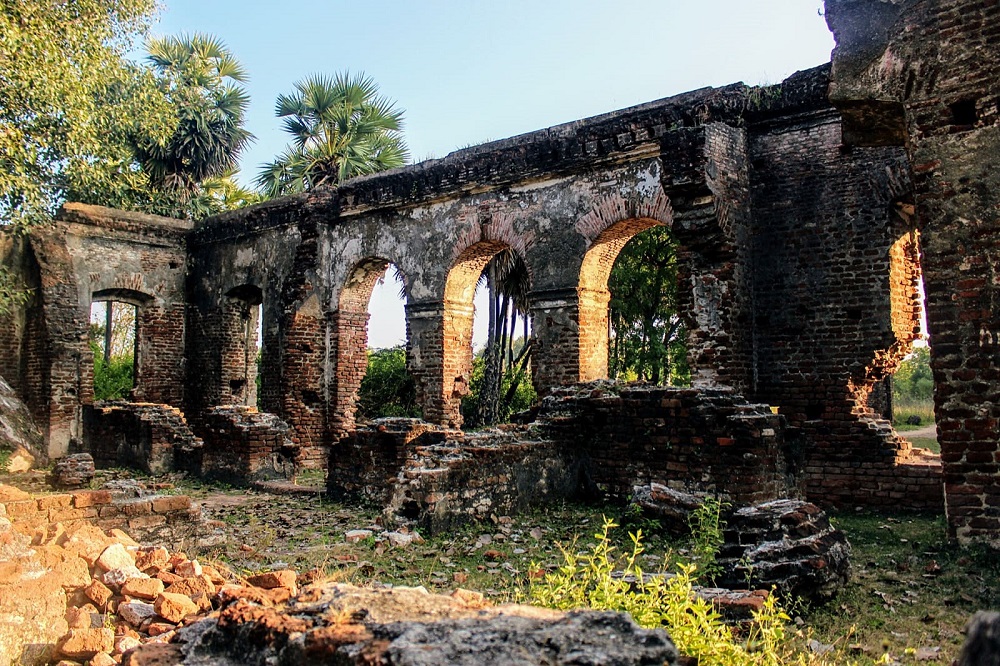
The arches, which is what I first saw and encountered were actually parts of a 250-year-old French mission- this mission was the first try at trying to find something relevant from the past and establish their own missionary.
The missionary that was built for this very purpose itself has fascinating aspects which will be quite interesting for a student of history. It is built with two kinds of bricks- one that we use in contemporary times, and one which is flatter and larger- these bricks resemble the one used in ancient places like the Mediterranean.
In the whole site, there are no signs that will guide you where to go. It is up to you to weave a story and walk-in whichever direction you want. But, the ideal way to walk is to follow a path that goes away from the ruin, through the jungle and takes you towards the river.
This is the place for various excavation sites, many of which claim that there was a 45-metre long warehouse here, along with houses, pits, and drains. The pits were said to be used for dyeing muslin. It is in this area that the Roman influence is more visible. The archaeologists have unearthed many Roman artefacts like tableware and wine, which shows that there must have been trade relations with the Romans.
Walking through here is like diving into a history textbook.
As there are no proper trails, you can actually just about go anywhere. Riverfront is an excellent place to just rest for a while before trying to continue on the stories of the past. There is an old rope by the riverfront which you can take to go down. While I did not dare to do so, I am sure there are some mysteries down there.
Throughout my walk, I came across different types of ruined pots and other artefacts that strewn over. It was almost like a treasure hunt, where I had to find objects.
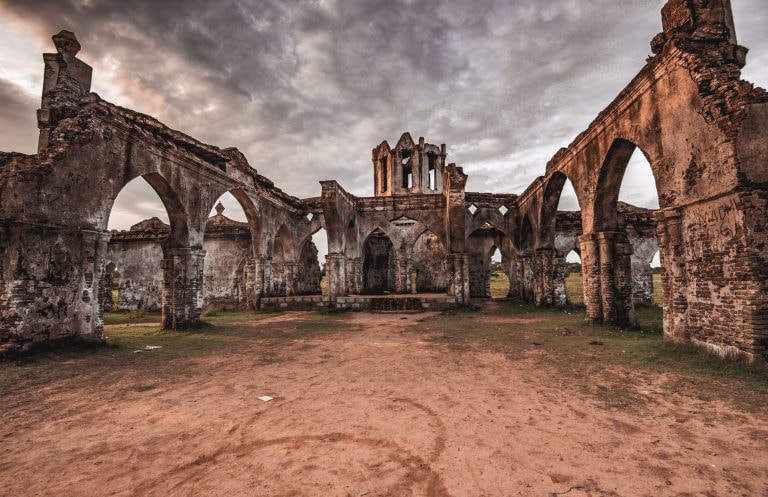
As you keep walking, you will find various arches, the foundation of buildings, and decaying bricks just lying waiting to be heard. It is hard to imagine that such an isolated area, whose long-standing brick walls are now only attracting creepers which are slowly clinging to them, was once a town of bustling energy, that there was a market once, and a stage to celebrate life or anything at all. If the artefacts could speak, I could have heard all about them, yet as I walk ahead all I can do is paint my own imagination as I come across a new object.
This is said to be one of the first international ports of India, where the Roman ships stopped and supplied amazing amphora jars of wine and olive oil, as they took back spices, peacock feather and even gemstones. This significant trade relationship between India and the Romans is often left unexplored and hardly talked about in any history books.
As I started reflecting more about the past, I realised how little I knew about such an important and significant part of our history. It was almost like how the trees had hidden this town away from the public glare, in the same way over history has been shrouded and this town has been kept away from us.
In a way, this makes it an ideal place to just visit and make your own discoveries. Since it is away from the prying eyes of the tourists, you will find yourself almost all by yourself in the ancient ruins. As you touch the bricks and interact with the ruins, you will find yourself having a unique experience- it is as if you have built a relationship with these inanimate objects.
What really can be called tragic for this site is, that while it is open for tourists, many fail to understand the significance of it. There are no guides or museums to uncover artefacts and talk about how important they were.
There is no one who can come and explain to you how things were, and help you built the story. There was a museum once, yet it was immediately shut down, as private citizens are not allowed to collect artefacts.
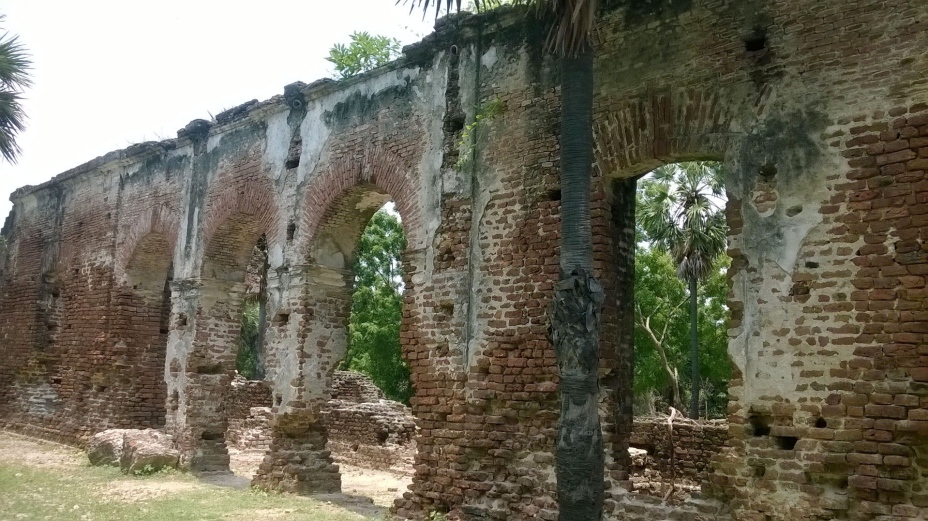
The UNESCO was also in talks about making this a World Heritage Site, but nothing of that sorts has happened yet. What is really unfortunate is that there are no signs, which can lead you to the right trial, which makes it highly disjointed.
The only way to know more about the artefacts uncovered from here is by visiting the Puducherry Museum, which now has a host of artefacts from this place.
There is so much more which can be unearthed and discovered from this very site. Yet, the lack of sufficient interest is a major deterrent. Even the sheer evolution of the town from the Romans- who saw this place a repository of wealth and fortune, willing to trade goods, to a town bustling with French who only saw this place as a good centre to build a missionary and save the ‘poor’ of the area.
For the French this town was charity- for the Romans, this town was for a prospering mutually agreed business deal. As insights are so valuable when we write India’s history, that they shouldn’t just be tossed away. Arikamedu deserves more attention than it gets, and it is the time that this archaeological wonder is brought into the limelight and developed into a gem that it really is.
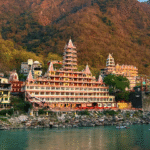
10 Best Temples to Visit in Rishikesh, Uttarakhand
24 Dec 2025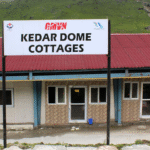
10 Best Hotels to Stay in Kedarnath Dham, Uttarakhand
24 Dec 2025
10 Best Romantic Places and Things to Do in Goa for Couples
24 Dec 2025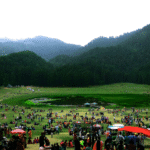
10 Best Places to Visit in Dalhousie, Himachal
24 Dec 2025
A Complete Guide to the Best Tourist Attractions in Sri Lanka
24 Dec 2025